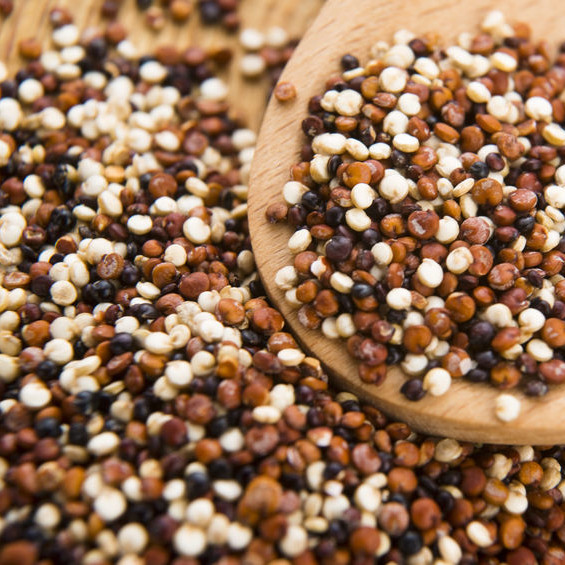
Ancient Grains
What are Ancient Grains?
Ancient grains is an umbrella term for grains and pseudocereals not bred or genetically manipulated for many centuries. Consumer interest in “natural” and non-hybridized grains and cereals continues fueling demand for these grains.2
Some producers in the Americas eschew the “ancient” label since these grains have been planted since antiquity and are staple crops outside North America.1
- Amaranth
- Barley
- Buckwheat
- Chia
- Einkorn
- Emmer
- Farro
- Fonio
- Freekeh
- Job’s Tears
- Khorasan or Kamut
- Millet
- Quinoa
- Sorghum
- Spelt
- Teff
- Wild rice
Origin
Ancient grains are plants cultivated since antiquity that have remained unchanged over time. As such, these ingredients have a reputation as a healthy alternative to conventional, processed grains.
These grains and seeds are deemed unique ingredients, perceived as sustainable and healthy, in part, because they do not tolerate commercial fertilizers or other chemicals and are often grown organically.1
Ancient grains are not to be confused with heritage grains, a designation that tends to apply to heirloom plant varieties and landraces.3
Function
Ancient grains’ hulls are intact and the resulting flour tends to be more flavorful and nutty, while baked goods produced using them are darker and denser.1, 2 Their addition to baked goods provides visual interest and differentiates products via their unique flavor profiles.4
Demand for these grains, according to marketing and economic research by Cornell University, is outpacing supply and consumers are willing to pay more for items made from them.5 Some of these grains have only recently entered mainstream production and distribution channels.
Nutrition
Although nutrition claims have been made for various ancient grains, not all of these have been rigorously investigated. A particular problem is the sweeping generalization that all ancient grains are gluten-free and that all products made with them are also gluten-free. Despite some studies suggesting some of these types of grains may trigger less adverse reactions than conventional wheat, ancient grains are not universally suitable or safe for consumption by individuals with celiac disease or gluten intolerance.6
Commercial production
Ancient grain use is increasing in popularity in the craft and commercial baking sectors since these flours and grains allow bakers to create products with unique flavor profiles when used alone or in combination.
Sales of alternatives to modern wheat, for example, grew at double-digit annual rates in 2017.7 Growers are also being encouraged to plant ancient and heirloom varieties to help meet demand regional mills face.8
Their use has entered the mainstream as evidenced by General Mills offering an ancient grain Cheerios cereal with added spelt, quinoa, and kamut.7
Application
Scientific inquiry into these grains continues, including rigorous sensory evaluation of finished products. Cornell University, for example, is leading research focused on evaluating modern, ancient and heritage wheat varieties cultivated in organic growing conditions for regional use.5
Bakers were an integral part of the Cornell research, which included rigorous evaluations of different wheat varieties in sourdough and yeast breads, matzo crackers, shortbread, as well as whole steamed kernels, and pasta. The ideal grain variety for a baked good depends entirely on the end product, said researchers.
“The way the baker handles the dough and the way the baker scores the dough has a tremendous impact on flavor,” said Stefan Senders of Wide Awake Bakery, one of the test participants. “I only learned that by virtue of this test. It’s changed our baking practices and the way I evaluate a loaf.”
Applications for each grain generally fall into two main categories, flours and grains.
- Flour: Ancient grains can be ground into flour or meal for making leavened and unleavened breads. Some of these flours have been used to make fermented and unfermented flat breads and pastas. Several different flours can be combined to make unique formulations.
- Grains: Many ancient grains are an ingredient in breakfast cereals and nutritional bars as well as in multigrain breads. The ratios and flour/grain blends required will vary based on the end product. Experts advise leveraging the unique properties—color, flavor, texture, and water binding characteristics—of these flours to formulate a blend with a balanced flavor profile matching the desired end product. Blends might be adjusted, for example, to give a bread mainstream appearance and appeal or else a dense, hearty texture and taste.4 For leavened breads, some bakers prefer to use fermented starters in lieu of yeasts.
FDA regulation
Regulations and allowable dietary claims pertaining to these ingredients varies. The definition of “gluten-free” in labeling, for example, is extremely precise and, although there are some studies suggesting less reaction may be caused by some of these grains, ancient grains are not universally suitable or safe for consumption by individuals with celiac disease or gluten intolerance.6
References
- Ancient grains. https://wholegrainscouncil.org/whole-grains-101/whats-whole-grain/ancient-grains. Accessed 24 October, 2018.
- Muckian, Michael. “Bringing Ancient Grains to Market in Wisconsin.” Wisconsin Gazette, 11 Aug. 2017, www.wisconsingazette.com/lifestyle/bringing-ancient-grains-to-market-in-wisconsin/article_2fa1113a-7ec7-11e7-bff6-3b005be25f2e.html. Last accessed 18 October 2018.
- King, Ellen. Heritage Baking: Recipes for Rustic Breads and Pastries Baked with Artisanal Flour from Hewn Bakery. Chronicle Books, 2018. ISBN: 9781452167879
- “A Closer Look at Ancient Grains.” World Grain, 7 Aug. 2018, www.world-grain.com/articles/10783-a-closer-look-at-ancient-grains. Last accessed 18 October 2018.
- Ramanujan, Krishna. “Cornell Chronicle.” Heritage and Ancient Grain Project Feeds a Growing Demand, news.cornell.edu/stories/2017/07/heritage-and-ancient-grain-project-feeds-growing-demand. Last accessed 18 October 2018.
- Roark, Constance. “Nutrition Talk: Ancient Grains for Current Times.” Boulder Daily Camera, 16 May 2018, www.dailycamera.com/lifestyles/ci_31879491/nutrition-talk-ancient-grains-constance-roark. Last accessed 18 October 2018.
- Banse, Tom. “Move Over Wheat, Demand Rises For ‘Ancient’ Alternatives.” NW News Network, www.nwnewsnetwork.org/post/move-over-wheat-demand-rises-ancient-alternatives. Last accessed 18 October 2018.
- O’Connell, John. “Niche Grain Supplier Seeks Heirloom Wheat.” Capital Press, 31 Oct. 2017, www.capitalpress.com/Profit/20171031/niche-grain-supplier-seeks-heirloom-wheat. Last accessed 18 October 2018.

